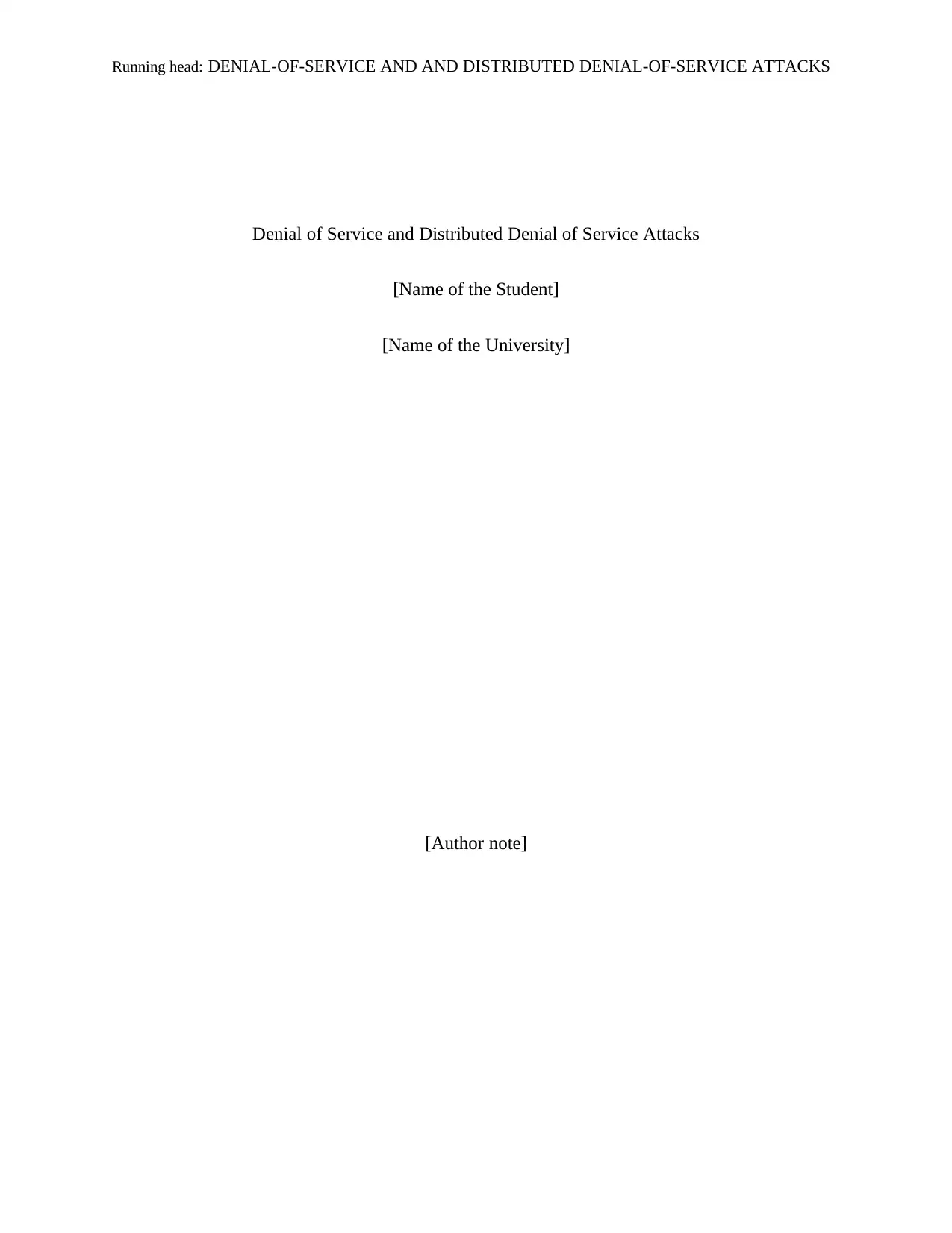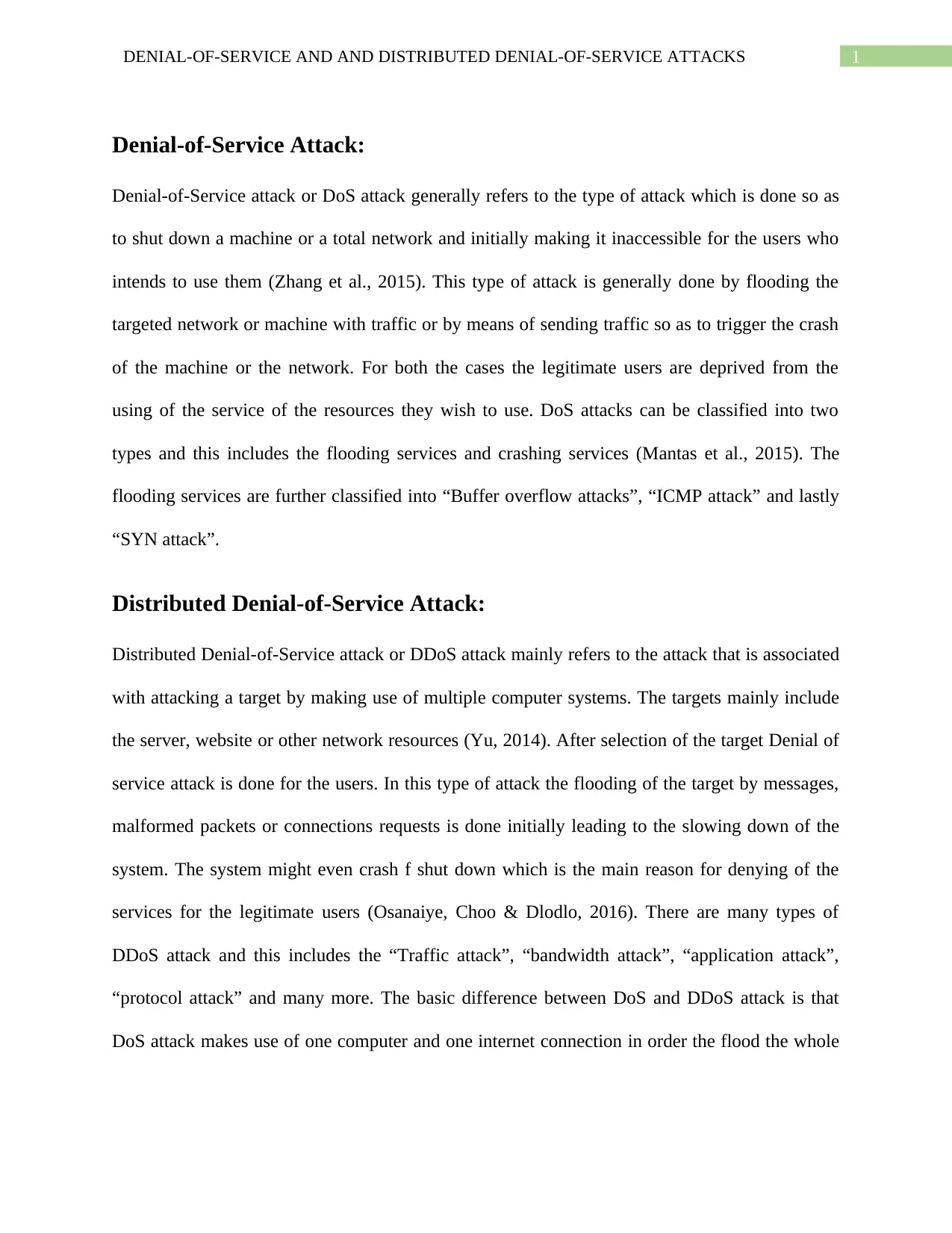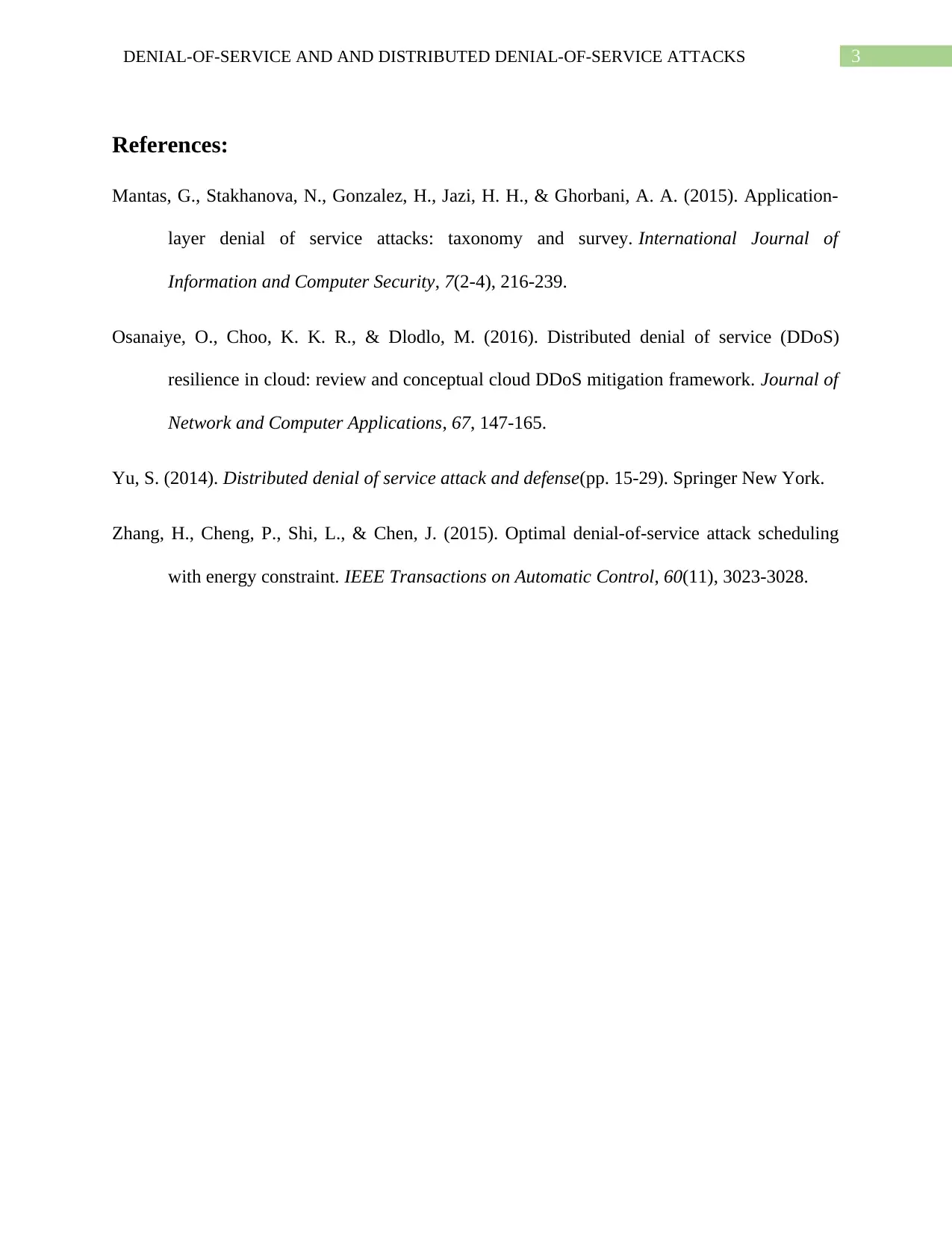Report on Denial-of-Service and DDoS Attacks: Security Challenges
VerifiedAdded on 2023/06/13
|4
|586
|366
Report
AI Summary
This report provides an overview of Denial-of-Service (DoS) and Distributed Denial-of-Service (DDoS) attacks, detailing their mechanisms and classifications. DoS attacks are categorized into flooding and crashing services, including buffer overflow, ICMP, and SYN attacks. DDoS attacks, which utilize multiple computer systems to target servers, websites, or network resources, are further divided into traffic, bandwidth, application, and protocol attacks. The key difference lies in the scale, with DoS attacks using a single computer and internet connection, while DDoS attacks employ multiple systems to overwhelm the target. The report references various studies to support its analysis of these security threats.
1 out of 4











![[object Object]](/_next/static/media/star-bottom.7253800d.svg)